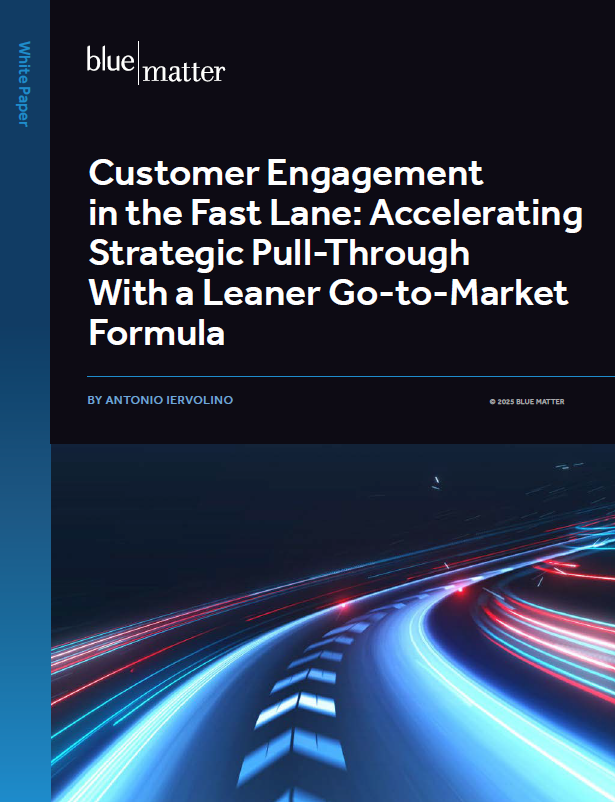
In part 1 of this series, we briefly touched on some of the political and budgetary pressures in Europe that are shaping proposed changes in pharmaceutical policy and health technology assessment (HTA) processes. The biopharma industry will feel the implications of change at the international and individual market levels. The impacts on the future commercial opportunity for orphan drugs could be especially profound.
In this article, we explore the opportunity for biopharma companies that can align to new incentives and harness the changes in HTA processes. A prime example of these changes is the future introduction of Joint Clinical Assessment (JCA) in Europe for oncology and advanced therapy medicinal products (ATMPs) starting in 2025 and orphan products starting in 2028.
We also look at the commercial risks associated with the additional differentiation that may be created among “orphan drugs” and the higher bar for manufacturers to benefit from commercial and pricing incentives. All of this drives the need for industry to continue pushing the acceptance of real-world evidence in pan-EU and national level HTAs, as well as develop data-driven price contracting options with payers that truly address uncertainties in value and budget impact.
The Political Backdrop
Regulatory incentives were originally enacted in EU legislation in 1999 (European Orphan Medicinal Product Regulation). These incentives were designed to encourage manufacturers to develop drugs for rare diseases that previously did not have treatment options. Tackling such diseases was presumed to be commercially unviable due to the small number of patients and the challenges in characterising, identifying, and studying these indications.
Additionally, many countries adopted policies that allowed for adapted HTA pathways, softened benefit appraisals for orphan drugs (ODs) and/or provided leeway to negotiate favourable prices outside the range normally considered justifiable. This recognised that ODs are often unable to meet the evidentiary requirements of standard evaluation processes. It was understood that seeking a high price to recoup and justify R&D investment across a small patient population was somewhat justifiable and could be managed by the healthcare system given the limited overall budget impact. Accommodation for such therapies was underpinned by the implicit societal value (and political pressure) placed on enabling access to treatment for underserved patients – children with rare hereditary and often severe life limiting or chronic conditions being a prime example.
However, the OD category has expanded over time, in a way not originally envisaged. Payers are pushing back against the application of perceived lenient evaluation and pricing mechanisms in cases where ODs are not able to clearly demonstrate value. This is especially the case where effective therapies are already available for the indication, or where older molecules have been repurposed for use in orphan indications (with relatively low clinical development risk or cost). Equally, payers are familiar with the increasing paradigm of companies “salami slicing” larger indications such that products qualify as ODs under the prevalence criteria in the legislation (diseases affecting fewer than 5 in 10,000 people) and/or products being launched at a high price in an orphan disease before going on to expand use into much broader patient populations.
In addition, the number of ODs being developed—driven by the incentives provided—has increased dramatically, with over 50% of FDA product approvals in 2023 being designated as OD. Consider that:
- In 2021, orphan drugs accounted for 73 of the top 200 drugs globally by revenue.
- The cumulative cost of ODs as a percentage of the drug budget in major markets has increased consistently and substantially since 2000. According to Evaluate Pharma, in 2024 global orphan drug spend should hit $185 billion, growing to $270 billion by 2028.
Specific OD Reforms at the EU and Country Levels
Three forces are shaping the future commercial environment for European orphan drug launches:
- New EU pharmaceutical legislation currently going through the European parliament
- A revolution in EU HTA processes that will see the clinical benefit of orphan drugs evaluated via the “Joint Clinical Assessment” from 2028
- Various revisions to how payers assess orphan drugs at the national level within individual markets across Europe
EU Legislation
Proposed changes in the EU pharmaceutical legislation would include adjustments to
- Orphan Drug Data Protection: The period during which during which generic, hybrid, or biosimilar marketing authorisation (MA) applications cannot refer to the data from the innovator’s dossier
- Market Exclusivity (the period during which new drugs are protected from competition from similar medicines in similar indications): In particular introducing the concept of “Modulated Orphan Market Exclusivity,” a variable period of market exclusivity depending on the characteristics of an orphan drug
While the standard period of data protection would be reduced to 7.5 years from eight under the proposals approved by the EU Parliament, there is potential to increase this to a capped maximum of 8.5 years. This upside would be based on a variety of criteria. For example:
- A new active substance being studied in comparative trials versus the standard of care – awarded an extra 6 months of data exclusivity
- Products where a significant share of the research and development takes place in the EU (and at least partly in collaboration with EU research entities) – awarded an additional 6 months
- A drug that qualifies as meeting a high unmet medical need – awarded an additional year
Similarly, in comparison to the current 10-year baseline period of market exclusivity, an OD would be granted nine years as standard in the future, with the potential to extend that by a further two if the therapy is deemed to address a “high unmet medical need” (HUMN). Importantly, the definition of HUMN has not been clarified.
The legislation’s intention is to encourage development of treatments for the 95% of rare diseases that do not currently have therapeutic options. This revision would also help address payers’ concerns that too many ODs are being rewarded with market exclusivity regardless of the rare disease’s severity or the extent to which it can already be managed through available therapies. However, the new criteria need to avoid the risk of penalising value-adding drugs coming second to market in an indication, given that important unmet needs often remain even after breakthrough therapies become available.
In addition, the new legislation recognises that not all ODs are equal. While, in principle at least, originator ODs will have the potential to achieve a longer market exclusivity period than before if they address HUMNs (11 years vs. 10), ODs that are already established products and approved based on bibliographical applications will only benefit from four years of exclusivity in the future. Again, such changes may cause consternation to some segments of the pharma industry but are intended to recognise that the reward should be commensurate with the level of R&D investment and risk required to achieve approval.
Finally, the new legislation introduces the concept of a global orphan MA. This would mean that separate exclusivity periods for different orphan designations will no longer be available for the same product. The baseline exclusivity period can now only be extended (by 12 months) if the product is approved for a new therapeutic indication for a different orphan condition. This extension can be granted twice, for new approvals, so long as these approvals are at least two years before the end of the exclusivity period. This clearly has ramifications for manufacturers in terms of how they plan and implement life cycle strategy for future assets. From the payer perspective, it seemingly reduces the scope for companies to delay the entry of generic competitors on the one hand and provides greater clarity to generics manufacturers seeking to launch on the other, ensuring OD prices are open to appropriate downward modulation from competitive pressures.
Joint Clinical Assessment
Accompanying the future changes in commercial incentives, ODs will be subject to the JCA process from January 2028 (although products for rare oncology indications will go through JCA from January 2025). It’s true that elements of the new JCA process are still to be finalised and there will be many learnings from oncology and ATMP products assessed in the first few years. However, there is potential for JCA to be a double-edged sword.
On the one hand, the time it takes to assess and publish reimbursement recommendations for ODs is highly variable across Europe. Many products have seen significant delays in access, though that’s also due to drawn out price negotiations. For example, in 2023, the average time to reimbursement for orphan drugs in the EU27 was 524 days (and a lengthy 630 days in Spain).
All stakeholders—industry, regulators, and payers—are aligned and keen to ensure that valuable innovations are made available to rare disease patients at the easiest opportunity. Perhaps the JCA will help streamline processes and speed access to medicines in some markets. On the flip side, there is a risk that it ends up being a supplementary process that fails to displace national payers’ and HTA bodies’ desires to conduct their own “tailored” local reviews.
It is also possible that industry will see that OD JCA assessments are inconsistently incorporated into national HTA and reimbursement negotiations. For example, there are likely to be questions around data uncertainty or bias, a frequent issue given the limitations in clinical trial design and the ability to conduct indirect treatment comparisons. Payers may interpret such outcomes differently across various markets.
Some payers may give such issues significant weight in local assessments and leverage this negatively in reimbursement and price discussions with industry. Or they may request further “confirmatory” data generated locally due (for example) to pushback based on perceived specifics of the local patient population, management, unmet need, or other factors. This would undermine the purpose and influence of JCA in supporting a consistent clinical assessment across EU Member States. It would not streamline negotiations or bring the desired efficiencies in OD data submission and evaluation.
We should also mention that greater acceptance of real-world evidence (RWE)—and industry’s ability to generate and analyse sufficiently robust data drawn from multiple real world data sources—is a key to the success of JCA for orphan drugs, given the inherent limitations in generating supportive data for such products. Therefore, it’s concerning that initial published guidance suggests that “it may well be that this [real world] evidence is insufficient for estimation of the relative treatment effectiveness in the context of JCA.”
Industry will need to continue pushing for a pragmatic approach that more closely reflects the methodological openness of NICE and HAS as opposed to the scepticism of IQWiG. It will be critical to align around evidence expectations and the role of RWE in joint scientific meetings early in development so that the requisite studies and modelling can reflect payer needs and concerns.
In summary, coordinating a centralised clinical benefit assessment via the JCA has the potential to streamline subsequent national HTA evaluations and to accelerate access timelines for ODs. However, obvious barriers exist. Experience over the coming years will show the degree to which efficiencies improve (and in which markets).
National-Level Changes
A final layer to the policy changes coming down the track is at the individual country level. While many markets still do not formally differentiate HTA processes for orphan drugs, other countries have looked to update guidance around assessment and pricing for such therapies. Where this is the case, the goal has mainly been to reign in orphan drug prices while still enabling incentives to support their launch and access to patients.
Germany is perhaps the most important example, where the revenue threshold for orphan drugs to undergo a mandatory full assessment was reduced from 50 million EUR to 30 million EUR in 2022 as part of the GKV-FinStG legislation. A recent IQWiG study highlighted that more than half (54%) of orphan drugs since 2011 that hit the revenue threshold and underwent a regular benefit assessment could not demonstrate an additional benefit. In many cases, we expect this will have been due to the reluctance of IQWiG to accept real world evidence in its assessments.
The impact of this change together with new pricing “guardrails” in Germany are highly consequential for orphan drugs. More therapies will need to undergo a full assessment given the lower threshold. In addition, the mandated discount vs. the appropriate comparator resulting from an assessment of “no additional benefit” (a risk facing many orphan drugs) will likely result in a significant decrease in commercial returns for the products impacted. Potential international reference pricing impacts must also be considered.
In addition to greater accommodation of RWE in assessing the value of these products, as highlighted earlier, enhancing the role and scope of innovative contracting approaches (i.e. managed entry or “risk share” agreements) should be revisited. Industry and payers recognise the inherent uncertainty in assessing the value and managing the high per-patient costs of orphan products. They also recognise the potential for innovative contracting approaches to mitigate these challenges. However, technical and legal issues, political inertia, and concerns around administrative costs and commercial liability have limited their adoption, even in arguably the most obvious use case to support cell and gene therapy reimbursement.
For example, in Europe, Bluebird’s $1.8 million gene therapy, Zyntelgo™ in beta-thalassemia failed in negotiating value-based pricing agreements spreading the cost of the treatment over five yearly payments, linked to performance in reducing transfusion dependence. The product was withdrawn from Europe to the frustration of the company and to the disappointment of patients.
Where managed entry contracts do exist, their designs are usually unambitious, e.g. leveraging non-transparent net discounting and volume cap rebates. As a result, they often fail to properly share risk or facilitate the development of evidence that can resolve uncertainties around therapeutic benefits. This is to the detriment of all parties involved.
With the coming wave of ATMPs, specifically cell and gene therapies, new solutions are needed to link price and long-term benefit, as well as build the appropriate payment models and mechanisms to track patient outcomes. We hope that this catalyses and normalises the negotiation of more flexible pricing contracts that would resolve concerns around orphan drug products.
It’s clear that the biopharma industry must continue to track and shape the OD legislative and HTA policy environments in Europe and across individual markets. Future commercial strategies will inevitably need to trade-off the opportunity and barriers across different jurisdictions.
Orphan drug manufacturers should also revisit the capabilities needed to partner with payers on creative solutions that deliver patient benefits while aligning to prices that recognise value. Both the ability to capture and analyse real world data (in real time) and incorporate this into commercial contract frameworks are likely to be key components. Market access teams will need to coordinate closely with other functions across commercial, medical, government affairs, and operations.
In part 3, we’ll look at the upcoming JCA implementation. As uncertainty and speculation over the remaining elements of the process resolve towards the end of 2024—and pioneer therapies in oncology and ATMPs are put through their paces in the first half of 2025—we will refine our expectations around the impact of this revolution and how companies can navigate it successfully.







